– Welcome, everyone, to Wednesday Nite @ the Lab. I’m Tom Zinnen. I work at the UW-Madison Biotechnology Center. I also work for the Division of Extension Wisconsin 4-H. And on behalf of those folks and our other co-organizers, PBS Wisconsin, the Wisconsin Alumni Association, and the UW-Madison Science Alliance, thanks again for coming to Wednesday Nite @ the Lab. We do this every Wednesday night, 50 times a year. Tonight, it’s my pleasure to introduce to you Taylor Seale. She’s with the UW-Madison Division of Extension and works at the Dane County office in the Community Youth Development Program. She was born in Seattle, Washington, and went to St. Joseph’s High School in Ogden, Utah.
Then she went to Aquinas College in Grand Rapids, Michigan, to study both theater and business. She studied arts and public health at the University of Florida, and recently finished her Masters of Public Health here at UW-Madison. Tonight, she’s gonna speak with us about positive youth development at the intersection of arts and public health. Would you please join me in welcoming Taylor Seale to Wednesday Nite @ the Lab?
– Thank you so much, Tom, for that introduction. Before I begin, I just wanna give a special thank you to PBS Wisconsin and Wednesday Nite @ the Lab for this opportunity. I also would like to thank the community partners that I worked with for this project, including UW-Madison School of Medicine and Public Health, UW-Madison Center for the Humanities, and the Center for Arts in Medicine at the University of Florida. I also would like to thank the Madison Youth Arts Center, Odyssey Project Junior, Goodman Community Center, Warner Park Community Center, Lussier Community Center, and Briarpatch Youth Services. For today, I’m gonna give an overview of the Madison Youth Arts Center, which was the basis of my graduate public health thesis project. I’ll then transition into how arts organizations can address adverse childhood experiences, as well as give some arts-based intervention examples. And then I’ll transition into how the arts fit into existing public health frameworks, as well as some arts-based intervention examples.
Then, finally, I’ll talk about my case study, my Masters of Public Health thesis with the Madison Youth Arts Center, and end with summary and recommendations. So the Madison Youth Arts Center is a multimillion-dollar development that just recently opened earlier this fall. And the reason for it being built was that arts organizations across Madison were having increasing difficulties finding space to hold their programming. So the Madison Youth Arts Center was built as a central hub for these arts organizations and artists to meet and gather as well as provide more accessible and equitable opportunities for youth. However, before youth can experience the benefits of the arts, benefits such as peer support, belonging, increased confidence, and positive self-esteem, it’s really important for the Madison Youth Arts Center to address socioeconomic needs and mitigate these access barriers, particularly for underrepresented populations. And once the Madison Youth Arts Center addresses these access barriers, then it can really become a much needed resource and opportunity-rich place for youth to explore, grow, connect, and learn, and build resiliency through the arts. So when we think of building resiliency, we think of adverse childhood experiences, and adverse childhood experiences, also known as ACEs, are defined as exposure to violence, abuse, neglect, or trauma. Here, youth who experienced ACEs are often in a state of toxic stress, which can alter brain and body developments in both short and long-term consequences. And some of these negative impacts can include learning capabilities, critical thinking skills, decision-making skills, as well as having an increased likelihood of risky behaviors, such as teenage pregnancy or substance abuse. And children who experience ACEs are much more likely to have chronic health conditions later in life as adults, such as heart disease, depression, and diabetes.
The American Academy of Pediatrics defines resiliency as a person’s capacity to rise above difficult circumstances and ability to recover from setbacks. For ACEs, to mitigate these health consequences, it’s important for someone to build resiliency. However, when we think of building resiliency, we often think of this as an individual personality trait, and unfortunately, this puts unjust blame on individuals who fail to struggle or overcome adversity. And resiliency can be built through shaping external factors like resources, environments, and communities. And because of the varying levels of exposure of ACEs, which can vary from living in poverty, moving frequently, experiencing food insecurity, witnessing or experiencing violence, there really is a need for a multi-layered, comprehensive approach. In fact, the CDC calls upon other sectors to coordinate prevention strategies on a population level. And really, interventions and strategies that have an emphasis on early childhood education, social-emotional learning, and skills connecting children to their communities are really important. So resiliency can be built through problem-solving skills, critical thinking skills, positive relationships with peers, self-expression, increased confidence, and trusting relationships with adults. The arts are a unique environment that can address all of these factors, and engaging in the arts can build problem-solving and critical thinking skills and form community connections. And from these skills, that can lead to better academic performance, preparation for employment, reduction of violence, and reduction of substance abuse.
Here, the arts are resilient environments for improving youth health for social and societal outcomes. So an example of such is an organization called Urban Improv. Urban Improv uses theater as a resiliency tool for self-expression skills and peer support. And they use improv in that students can act out scenarios that students face on a daily basis, such as violence, anger, and family issues, and using improv, they then freeze the scene and then can try different approaches as to how to resolve the problem. And so here, both students and their peers can observe these scenes objectively, learn from their peers, and better understand the consequences of their actions. And as you can see from this quote here, “Results from these improv workshops “affected the school environment positively, “from ‘fewer fights and angry outbursts, “more cooperation and self-assertion with peers, and more attentiveness and engagement in the classroom. ‘” Another example is a program called VOICES. And here, this program was for young people who were formerly incarcerated. And especially for young people who were formerly incarcerated, stressors of poverty, violence, and discrimination negatively affect their health, and they are more likely to have poor academic outcomes and social developments. And so this VOICES program, students learned about poetry.
They learned about the structure of poetry and created their own poems, and then they also recorded their own poems to music. And this program really allowed them to interact and collaborate with their peers. That fostered empathy, respect, and transformed this environment into one of belonging. And this quote here, “Using poetry, students were able “to instill a sense of self-confidence and empowerment “by learning to think outside of their current predicament and were inspired to make positive choices. ” Another example is the Artists Collective, and this is an inner city community center. And this was a safe space for youth to engage with their peers and also reduce exposure to the violence and substance abuse that were in their communities. And so the Artists Collective provided a variety of dance, music, summer camps, and employment programs. And so here, resilience was built through improved self-esteem and positive social skills. And as you can see the quote, “The Artists Collective has become a protective factor “for youth exposed to ACEs, using the arts as a means “to foster resilience through positive social skills and self-esteem. ” And the final example I have for you is called the DREAM Project, and this is through the National Dance Institute.
And here, this program was an inclusive dance program for youth with disabilities, ranging from youth who were deaf, blind, or intellectual and had physical disabilities to perform alongside their neurotypical peers. And so this project, they worked together for bringing the unique skills that each individual brought to the table and really collaborated together for unique dance numbers. And in this particular environment, it maximized teamwork, creativity, empathy, and community-building. And so here, “The DREAM Project highlights “the unique abilities and skills “that every youth brings to the dance studio, “as well as builds positive peer relationships while simultaneously destigmatizing disabilities. ” So again, when we want to shift from building resilience from an individual trait, we wanna shift to how can we shape environments to foster and build resilience? And this is a call to other sectors, to other organizations, to other fields, to create a network of support for youth health and well-being. And so now, how does this fit into public health frameworks? In particular, how can arts organizations fit into these public health frameworks? This is a framework that I like to reference, called the Fifth Wave of Public Health. Currently, we are in the fourth wave of public health, and this diagram really shows the evolution of public health improvements from structural to biomedical, clinical, and to social. And the social wave really addresses the social determinants of health, things like how our education, our income, and access and quality of healthcare affect our well-being and health. And here, we are in the fifth wave, or rather, a call to be in the fifth wave, which is the shift from individual health, individual behaviors, and individual circumstances, instead to a shift of community culture for health. There’s really a need for integrated health initiatives that connect through all sectors to improve health on a community level, and here the arts can come to the forefront of public health innovation, and to really understand their value and role in a healthy society, which includes things like placemaking, community building, and resiliency.
Another framework that I like to reference is the County Health Rankings Model, which was created by the University of Wisconsin’s Population Health Institute. And here, this diagram shows the many different factors that affect our health, ranging from our education, our access to care, our social influences, our built environments, and how our health behaviors contribute to our overall health outcomes. And here, I wanna highlight that 40% of our health factors that affect our health outcomes come from social and economic factors. So in particular, we really wanna be thinking about how spaces like the Madison Youth Arts Center and other arts organizations can support and improve the health of communities through things like education, employment, income, family and social support, and community safety. Another framework that I like to reference here is the social determinants of health. And this was adapted from the Bay Area Regional Health Inequities Initiative. So the social determinants of health are defined as the conditions where people are born, where they live, where they work and play, that affect our health. And here, current public health practices is more downstream, and in order to have better health outcomes, we need to go upstream. And so how are things like social inequities and our institutional inequities contribute to our health. So again, thinking, how can the Madison Youth Arts Center as well as other arts organizations envision upstream practices for bettering community health? In this resilience framework, which is an integrative model of pathways towards healthy development, when we think about resilience, again, we think about a person’s capacity to rise above difficult circumstances and setbacks, and instead of an individual personality trait, we instead want to think about how we can build resilience through shaping resources, environments, and communities.
And I really liked this diagram because I think it shows the interconnectedness between environments that can mitigate risks and provide a protecting factor as well as a promoting pathway towards positive, healthy development for youth. And so in particular, as part of the community domain, how can the Madison Youth Arts Center, and arts organizations in general, mitigate risk and elevate assets towards healthy youth development? So creative placemaking is when arts and culture are intentionally integrated into community planning and development. And a essential part of creative placemaking is human-centered design, where community members can provide locally-informed insight, expertise, and lived experiences to shape their environment through the arts. But in particular, I’m advocating for youth-centered creative placemaking as a public health strategy. In public health, we talk about the importance of engaging key stakeholders, and often, youth are left out of these conversations. There’s often a developmental mismatch when it comes to putting youth in decision-making roles. There is, on one hand, the desire for youth to be empowered, for them to be independent and engaged in leadership roles, while simultaneously they are undermined, but simultaneously they are undermined because of their age. And what we really wanna think about when we think about youth-centered creative placemaking is how youth in change-making roles contributes to positive youth development. Youth are community experts, and to better shape and improve healthy environments for youth, it’s really important for us to acknowledge that youth are experts and that they can shape, inform, and change the conditions in which they live, in which they work, in which they play. Utilizing youth in shared decision-making processes informs better policies and programs specifically intended for youth to benefit from.
An example of such is Arts Corps, and their mission is to really eliminate barriers to accessing arts education so that all people can creatively lead the transformation of their schools, of their neighborhoods, and of their communities. And through Arts Corps, there is youth-centered leadership opportunities to shape their school and community initiatives through the arts. So this quote here, “Arts programming focuses on fostering creative “and critical thinking skills, a sense of belonging, “connection, and mindsets for greater learning “and for positive youth outcomes through a racial and social justice lens. ” Another example is an organization called RE:FRAME Youth Arts Center. And here, this arts center is focused on youth-centered frameworks, in particular, youth-run programming. And RE:FRAME really centers youth as knowledge producers, which really shifts the culture and builds relationship with their community using the arts, or igniting social and political change through the arts. So the quote here, “Through arts and culture, “health and wellness, mobilization and activism, “and enterprise and education efforts, “RE:FRAME serves as a youth arts and liberation center “where youth can explore their powers, rights, and identities. ” Another organization I would like to highlight is the RYSE Center. And this center specifically gives youth tools and resources to address things like their emotional, mental, physical, and political issues that affect youth health and well-being. And programs at the RYSE Center focus on education and justice, community health, youth organizing, and arts and culture.
“Programming at RYSE is anchored in the belief “that young people have the lived knowledge and experience “to identify, prioritize, and direct the activities and services necessary to thrive. ” Another example is the Inner-City Arts program, and this program acts as a bridge between the art studio and the classroom. And by giving youth high-quality arts access, they actually have seen positive outcomes such as improved self-efficacy, improved academics, and improved communication skills. “The foundation of Inner-City Arts is the belief “that the arts and creative learning are essential “in the development of young people, “and that the arts can improve both individual and societal health. ” Which brings me to the Madison Youth Arts Center. Through the UW-Madison School of Medicine and Public Health, Master of Public Health students are required to work with a community organization for their thesis project. So I worked with the Madison Youth Arts Center, and again, this was a multimillion dollar development. It has 65,000 square feet, 15 studios, a 300-seat theater, visual art gallery spaces, shared office spaces for anchor partners, community spaces on each floor, and is really focused more on the performative arts, such as music, dance, and theater, and the space opened earlier this fall. When I became a part of the Madison Youth Art Center to do my project, they were wrapping up adult focus groups that was held with an outside consulting company. And these were held in the months of September to December of 2019.
And they were held with community leaders here in Madison, primarily leaders who served youth, ranging from principals of schools, to human service organizations, to leaders in community centers. And these were the questions that they were asked in kind of a general open format. What excites you about the Madison Youth Arts Center? How can diverse community members take advantage of this space? What other resources would you like to see available in this space? What other community arts groups would you like to see partner with the center? What arts-related activities would you like to see represented at the arts center? Do you participate in arts programming? Do you participate any barriers to accessing the arts center? And how do you see yourself or youth you know engaging with the arts center? So the first part of my project with the Madison Youth Arts Center was doing a qualitative analysis of these focus groups, going through all of the transcripts to then highlight three major themes and priorities for the Madison Youth Arts Center leadership. And the three major themes and priorities were a diverse board and staff, a welcoming atmosphere, and youth and parent engagement. When it came to a welcoming atmosphere, there was really an emphasis on feeling respected, valued, welcomed, included, represented, celebrated, and supported from all backgrounds. In particular, highlighted by Lighthouse Christian School, it’s really important for the Madison Youth Arts Center to be able to handle kids with trauma. “Kids are dealing with deportation, “poverty, homelessness, “physical, mental, and emotional abuse, and other trauma. “Someone needs to be able to deal with the students “at their point of need and then teach them about the arts. “Be able to be more patient and loving to all kids. Some kids may need more focus on loving and gaining trust.
” The second priority was creating a diverse staff and board for the Madison Youth Arts Center, and really an emphasis on hiring diverse, culturally competent staff that can interact with a variety of cultural, ethnic, socioeconomic, educational, and societal backgrounds. And this quote here, from the Progress Center for Black Women: “People managing the day-to-day outreach “also need to reflect the community, “and there needs to be staff or volunteers who do outreach to underserved communities. ” And finally, the last priority is youth and parent engagement. And this was really an emphasis on youth empowerment, youth resources, and giving parents opportunities to understand the benefits of participating in the arts. And this quote here, from The Hmong Institute: “Have quality programming “and having kids at the center of the work “and at the heart of the people who work at the Madison Youth Arts Center. ” So from this qualitative analysis, I shaped my project for the Madison Youth Arts Center leadership. And in particular, I wanted to focus on these two priorities: a welcoming atmosphere and youth and parent engagement. So before youth can experience the benefits of engaging in the arts, first, access barriers need to be addressed. Access barriers such as food security, income, safety, and transportation. And then, with youth and parent engagement, I really wanted to incorporate youth voice, which can foster belonging.
So the center and kind of foundation of this project was identifying youth as key stakeholders, and identifying youth as key stakeholders is vital to the success and sustainability of the Madison Youth Arts Center. And overall, by merging public health and the arts along with meaningful youth input, then the Madison Youth Arts Center could become more than just a performance space, but also a place to build resiliency through artistic expression and necessary community support systems. So to address access barriers, I needed to conduct a needs assessment. And the overall theme from that needs assessment was that Dane County youth needs safe, opportunity-rich environments that support equitable opportunities for health and well-being. So when we think of the great need for safe and opportunity-rich environments, we especially want to highlight and identify that this is especially needed for youth of color, for LGBTQ youth, and youth with disabilities. So again, we’re talking about the great need to create environments, opportunities, and resources that can support positive youth development. And so here’s a snapshot of some of the statistics that I highlighted for the Madison Youth Arts Center leadership. And really, when we dive into these, we wanna be thinking about how the Madison Youth Arts Center and arts organizations can be such a resilient environment that can promote youth health on a community level. So when it comes to food security, 17. 5% of youth here in Dane County are food insecure.
34% of students qualify for free or reduced school meals, and 12. 2% of high school students say that their family skips meals. This is a map of food access here in Madison. And in particular, it highlights the areas where there are food deserts, which coincide with lower income neighborhoods. And as you can see on the south side, far west side, far north side, and far east side, we see that food insecurity is more prevalent. And when we think about Wisconsin as a state, this graph really shows how households of color in Wisconsin disproportionately suffer from food insecurity. And in terms of youth, you know, food insecurity is connected to physical, cognitive, and psychological stressors, and youth who are food insecure are more likely to do poorly in school, have difficulty forming positive peer relationships, and have an increased risk of chronic illnesses as adults. Another access barrier is income. So 29% of Dane County’s Latinx population lives in poverty, 34% of Dane County’s Black population lives in poverty, and 11. 3% of the lowest income high school students report that some or all of their employment money is used to help support their family.
Youth who live in poverty often live in unsafe and stressful environments. They often have higher blood pressure and higher toxic stress levels, and this can lead, again, to poor school performance and poorer peer interaction. So as the arts center thinks about things like accessibility, particularly how income is an access barrier, it’s really important to know that the financial burdens often fall on youth themselves to help their family make ends meet. And in particular, 35. 3% of Latinx students use their income to support their family, 31. 6% of Black students use their income to support their family, compared to 11. 3% of white students. Another access barrier is safety. So we have 22. 7% of Dane County high school students reporting at least one ACE, and these can vary from having a parent who abuses alcohol or drugs, a parent who’s in jail, parents who are violent, or a parent who struggles with mental health.
There is an estimated 300 youth each night here in Dane County, and one out of three of those homeless youth will be approached for sex in exchange for food, shelter, or drugs, and 75% of those students will drop out of school. And here we have 100% of counties in Wisconsin report human trafficking, and 12% of low-income students report sex trafficking involvement here in Dane County. On the same lines of safety, we also wanna address mental safety. So here, 62. 6% of high school students in Dane County report feeling depressed but not receiving mental health services, as well as 69. 3% of high school students report feeling anxious but are also not receiving mental health services. Youth struggling with mental health continues to increase. In particular, LGBTQ students, students of color, students from low-income households, and students with disabilities suffer disproportionately from poor mental health compared to their peers. And in particular, when we break down mental health rates by income, we can see how this affects primarily low-income students, as well as, overall, see the increasing rate of suicide ideation across all students. And finally, the last access barrier that I wanted to address is transportation.
So Black Metro users have three times higher transfer rates compared to white Metro users. $28 is the cost of a 31-day low-income bus pass. The Madison Metro has seen a 0. 8% increase in terms of routes and services, but a 40% ridership increase over the past 10 years. Adequate, reliable, and low-cost transportation is a barrier here in Madison. In downtown service areas, you could catch a bus every five minutes, but some areas on the outskirts of town, you can catch a bus every 30 to even 60 minutes. And especially during peak hours, buses run at max capacity, so sometimes you aren’t able to even board the bus, meaning you could be waiting an hour, attempt to board a bus, and can’t come on because it’s too full. And in particular, lower income neighborhoods are affected the most by this, particularly not only by limited service lines, but poor sidewalks or no sidewalks at all, which makes it really unsafe for children. So in this was the first part of my project, providing a needs assessment for the Madison Youth Arts Center Board of Leadership. Really, how to identify access barriers to address inclusion and equity that focus on access barriers like food security, income, safety, and transportation.
And then, the second part of my project was how to incorporate youth voice into decision-making. So I held youth focus groups in the community to do this. So these youth focus groups, there were 53 youth participants. Their ages ranged from 11 to 17. There were five community organizations, and all of the youth that I worked with were compensated. And again, I wanna say a special thank you to these organizations who let me work with their youth: the Warner Park Recreation Center, Odyssey Junior, Goodman Community Center, Lussier Community Center, and Briarpatch Youth Services. And so these youth focus groups, we had a general discussion about the arts center, and then we also worked on asset mapping and addressing access barriers. And what was amazing is that youth really vocalized how they envisioned themselves and their peers moving throughout the Madison Youth Arts Center space. And as experts in their communities, youth identified the different resources needed and challenges surrounding things like program availability, the types of programs offered, safety, food resources, transportation, and opportunities for youth leadership and advocacy roles. So this is a map so you can see where the focus groups were held, that’s where the yellow dots are, and then, to kind of show as well where youth went to school.
And just to show as well that I wanted to make sure I had a range of reaching students on both north, south, east, and west sides of Madison. So the focus groups started off very similarly structured to the adult focus groups. I wanted to just kind of have an open-ended question for them to answer, such as, now that you’ve learned about the arts center, what questions or thoughts come to mind? What kind of arts programming would you like to see at the arts center? Do you currently participate in arts programming, such as in school or a hobby? And what excites you about the arts center? Students were given materials like this. We shifted into the gamifying asset mapping activity. So they received a map of Madison, and the red star indicates where the Madison Youth Arts Center is located. And then on the second piece of paper, they were given photos, mock-ups of what the Madison Youth Arts Center intended to look like. At the time, it was still under construction. And so then we shifted into the gamifying asset mapping, and asset mapping is a public health methodology where participants can identify existing resources and opportunities for change in their community. And so to gamify it, we had a deck of cards with the options listed here: their neighborhood, their age, their race, their transportation situation, and a wild card. And so we would randomly draw cards from the deck, and working together, youth had to think critically about complex topics like social inequities and infrastructures.
And they found this to be a really successful method to vocalize their experiences, ideas, needs, and solutions for getting to the Madison Youth Arts Center and the resources needed. So here is an example of one of the questions, or one of the decks that was drawn for a youth on the west side, who is six years old, who was Latinx, and there was no bus line through their neighborhood, and they were in transitional housing. And so really, the questions that we would ask ourselves, or that youth would be reminded to ask themselves is how can this imagined youth get to the arts center? What do they need when they get there? And what do they already have? And so youth would work together to troubleshoot this specific scenario, and they could imagine themselves, a peer, a sibling, a neighbor, or an imagined youth. And so youth had many ideas about how they would get this youth to the arts center. And first, they built upon existing resources, like family and friends in a carpool situation. They expressed how people would want Metro bus passes available at the arts center. They also expressed how, since this youth didn’t have a bus line through their neighborhood, that the Madison Youth Arts Center should invest in their own fleet of buses and vans. We even had a student who said that youth should design the buses and vans, and be able to paint or design some kind of cutout for that because they said it would be fun for youth to be able to do that, but also, it was an important marketing strategy. As the bus goes through neighborhoods, people would wanna know where that bus is going and go there too. They also said that it would be really important to use neighborhood centers, schools, and community centers as established and trusted pick-up and drop-off points for families.
And once this youth got to the arts center, youth stressed the importance of having a check-in area, particularly because this youth was six years old. They said that it would be really important to have a tour guide or someone who could then safely take that youth to the class or workshop that they were signed up for. They also said that because this youth was in transitional housing, they likely had an unstable housing environment, so perhaps food and snacks would be important for this youth to have access to. And youth had many different definitions for transitional housing. And again, this was not prompted by me. This was them discussing as a group and figuring out solutions together as a group. One youth described that transitional housing means living with Mom on the weekdays and living with Dad on the weekends. One student described transitional housing as couch surfing with friends because your home environment isn’t safe. And another student described transitional housing as being in foster care. And another student described transitional housing as being in a homeless shelter.
And all of these are correct. So it was great to see them troubleshoot that together and learn what this means. And because the student was in transitional housing, students really stressed the importance of perhaps, since their home environment was unstable, they would have the opportunity to keep their materials at the Madison Youth Arts Center. They also said that it was really important for this student to have a lot of love, assurance, and caring upon entering the arts center, which really prompted the importance of being around safe people, and then also having accessible resources, like a youth advocate or a counselor on staff at the arts center. So the youth focus groups, these were the major themes and priorities. They stem from safety and well-being to leadership and accessibilities, and youth focus groups really provided many parallels to the adult focus groups, but also many differences. And in particular, I wanna focus on, you know, when we have youth as change-makers, how giving them the opportunity to shape their environment and putting them in decision-making roles provides better policies and programs intended to benefit them. So when it came to accessibility, it was really an emphasis on free of cost programming, sign-up and walk-in classes, places to socialize with friends, do homework, and have availability on school and weekends. And when it came to imagining what the arts are, they envisioned programs beyond the performative arts. They wanted a recording studio, they wanted a culinary arts program, they wanted a library where they could not only do homework, but perhaps could learn how to do architecture or digital design.
And so again, you know, wanting to be able to be in the space, regardless if they had taken a class or not, having age-appropriate areas, as well as having an art store and gallery, merchandise, free trial classes, and incentives to be volunteers or teaching assistants, as well as having a transportation shuttle was really important for their accessibility. And then when we came to youth leadership, they really wanted to highlight the youth art that would be created in this space. They wanted to have youth showcases, youth-designed merchandise, youth input in decision-making processes with adults, opportunities to lead or learn how to lead workshops, assistantships, have internships, availability for college credit, mentorship opportunities, board of directors opportunities. And they also talked about how the many different youth staffing that could be had, such as having youth be tour guides or youth be front desk greeters. And when it came to safety and well-being, really, youth identified both the physical and mental needs for safety. And they had many different solutions and conversations for youth who are in transitional housing, youth who have disabilities, and LGBTQ youth. And so they talked about the many different staffing opportunities that could help promote safety and well-being in the center, including having a counselor, an accessibility coordinator, translators, diverse staff, and, overall, being around safe people. So again, the summary of the youth focus groups for safety and well-being. You know, a lot of it overlapped with those access barriers that were addressed in adult focus groups. And so these focused on having food and snacks available for youth, transportation availability, youth advocates, counselors on staff, as well as how this center can have positive identity for youth and positive support for youth.
And then when it came to leadership, youth really were interested in positions where youth could be on the board of directors. There could be youth interns, youth teaching assistants, youth mentors, almost like a Big Brothers Big Sisters type of program, and incorporating youth voice into decision-making processes. And when it came to accessibility, they really discussed and highlighted and identified the importance of the types of programs that were available, the cost of programs, the availability of programs, and how they wanted to utilize the space. So in summary of the youth focus groups, you know, 100% of the youth focus groups that I worked with asked if food would be available for them to use. And this is important because providing healthy snacks and food for all youth reduces social stigma, increases food security, and supports healthy cognitive and physical development for youth. 100% of youth focus groups asked how much it would cost for them to participate, and they really identified the importance of why these programmings at the arts center needed to be free of cost. It’s really important because I think it reduces social stigma and increases equitable participation and opportunity. And youth had many ideas as to how to offset these costs, such as creating paid job or internship opportunities, having youth, you know, if they’re a teaching assistant, then they can have free courses. But again, when we think about paid jobs, internships, and teaching opportunities for youth, it really cultivates leadership, community, and life skills for the future. And 100% of the youth focus groups asked if transportation would be provided or would be available to them.
And it’s really important here, especially in Madison, to create more consistent, safe, and reliable modes of transportation for all ages. And so youth, the solution surrounding transportation included having bus passes at the Madison Youth Arts Center, partnering with school and community centers, and investing in vans and buses for their own fleet. And for safety and belonging, you know, these key factors for youth resiliency and well-being is to establish trauma-informed environments, policies, and positions. In particular, positions that can support youth mental and physical needs. And really, by centering youth voices, then the Madison Youth Arts Center becomes a safe and welcoming space for youth to be accepted for who they are. So by centering youth voice, it really allows for more impactful and sustainable programming at the Madison Youth Arts Center. And here, this diagram shows the current Madison Youth Arts Center positions in gray, and then, in yellow, are the youth-recommended positions that came out of the youth focus groups. And from underneath the public health coordinator, you have a transportation coordinator, an accessibility coordinator, a youth advocate coordinator, translators, and counselors. And these positions really work together to evaluate and maximize how you thrive within the center, how this network of support can create safe, opportunity-rich environments and equitable opportunities for youth well-being and youth resiliency. And so arts engagement means that we can build resiliency in youth for better health, developmental, and societal outcomes.
Youth-designed environments can lead to healthier youth outcomes. And so it’s really important for public health to recognize the value and importance of the arts, and also for arts organizations, like the Madison Youth Arts Center, to understand their role in the public health system. And really, there is a shared responsibility across all sectors to contribute to resilient environments for positive youth development. Thank you so much for listening today. I hope you enjoyed learning about how the arts contribute to positive youth development, as well as joining me in building more resilient environments through the arts and public health. Thank you so much.
Search University Place Episodes
Related Stories from PBS Wisconsin's Blog

Donate to sign up. Activate and sign in to Passport. It's that easy to help PBS Wisconsin serve your community through media that educates, inspires, and entertains.
Make your membership gift today
Only for new users: Activate Passport using your code or email address
Already a member?
Look up my account
Need some help? Go to FAQ or visit PBS Passport Help
Need help accessing PBS Wisconsin anywhere?

Online Access | Platform & Device Access | Cable or Satellite Access | Over-The-Air Access
Visit Access Guide
Need help accessing PBS Wisconsin anywhere?

Visit Our
Live TV Access Guide
Online AccessPlatform & Device Access
Cable or Satellite Access
Over-The-Air Access
Visit Access Guide
 Passport
Passport

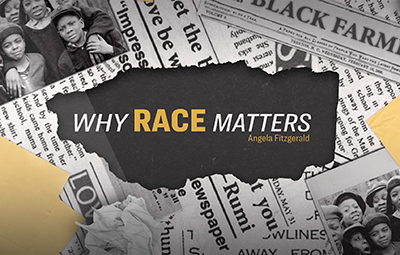
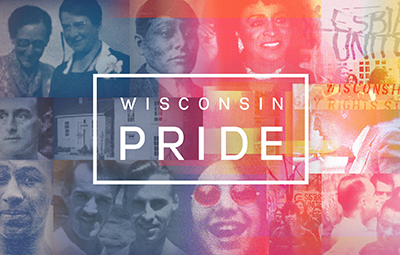




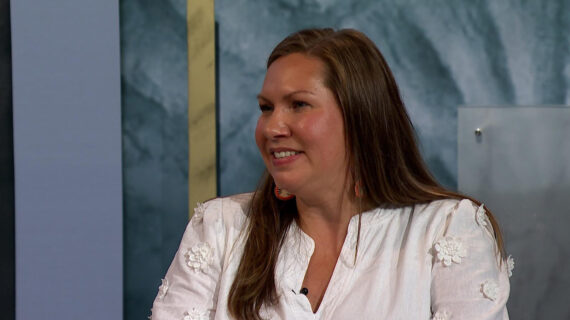
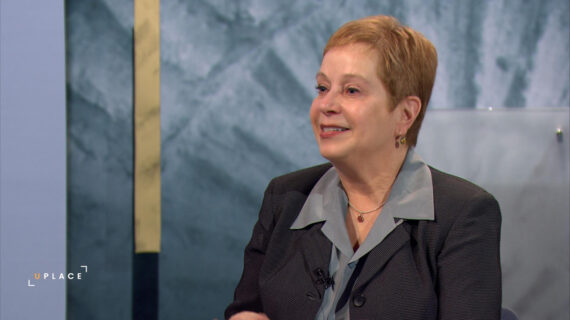
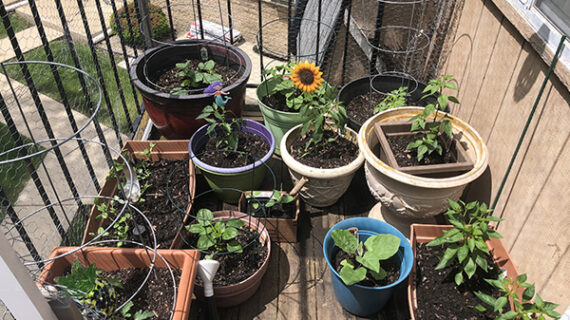
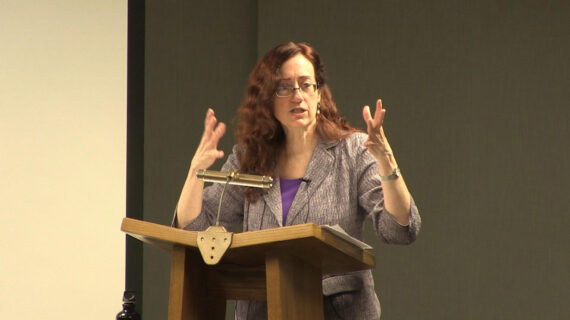
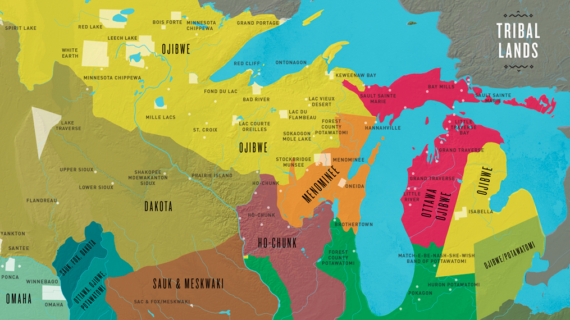
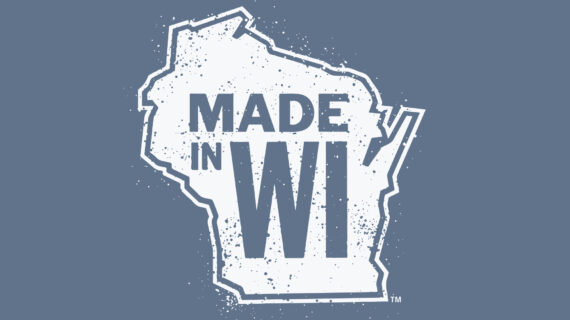
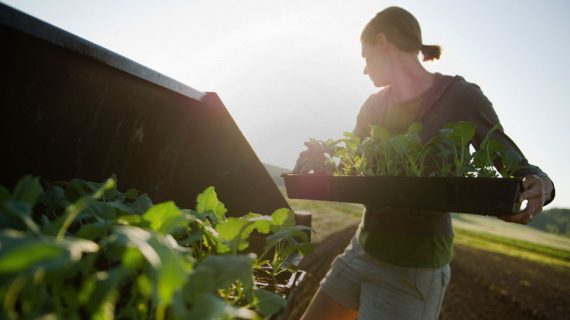
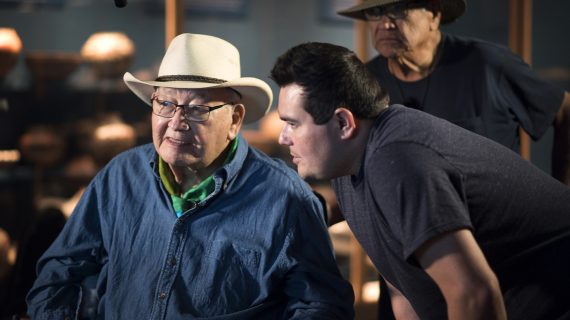
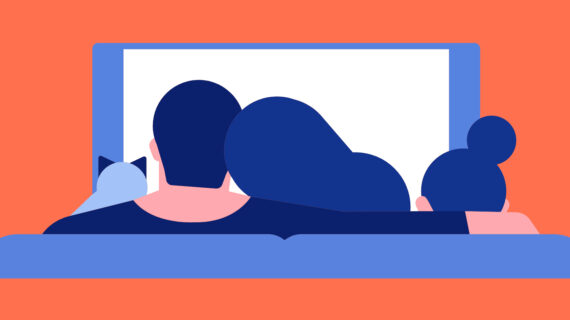
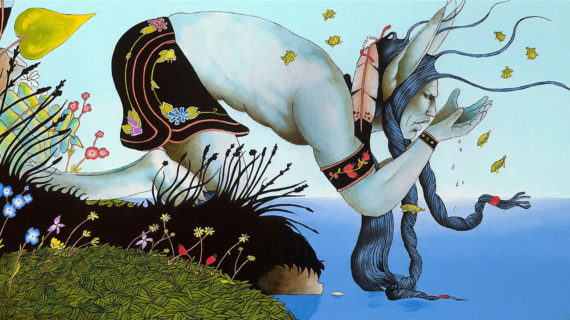

Follow Us